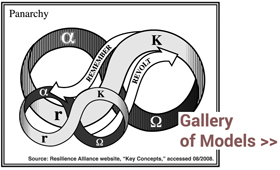Again this election season, Oregon voters can benefit from an innovative experiment in democratic process: the Citizens’ Initiative Review (CIR).
Here’s how it works. A CIR panel of 24 people is selected from among volunteers to be demographically representative of the state’s voters — by age, gender, ethnicity, education, location of residence, and party affiliation. They deliberate for five days on a single ballot initiative, choosing witnesses from a pool suggested by advocates and opponents. Then voters get to find out: what they were able to agree on, what they weren’t, how many came down on each side, and why. Here are the 2012 results, which are also available in the Voters’ Pamphlet.
From a 2011 blog post by University of Washington’s John Gastil, who led the National Science Foundation-funded evaluation of the 2010 CIR pilot project.
The Citizens’ Initiative Review now joins a set of innovative processes that have linked citizen deliberation directly to government.
It stands beside the Canadian Citizens’ Assembly, in particular, as one of the most promising new ways to link small group deliberation to mass public voting on ballot measures. The bottom line is that processes like these can bring us better ballot measures and more reflective, thoughtful voting choices.
Backing up a step more, it’s necessary to appreciate where all this comes from. There have been people creating new processes for public deliberation since the 1970s, with early efforts including Planning Cells in Germany and Citizens’ Juries in the U.S.
The latter process was devised by Ned Crosby, and he is the principal architect behind the Citizens’ Initiative Review, which he first developed as an idea for Washington State.
In Tom Atlee’s 2009 book, Reflections on Evolutionary Activism, he uses the phrase “integral deliberative democracy” to describe a vision for widespread adoption of processes like the CIR:
It is integral because it combines many co-intelligent approaches into a conversational loom upon which we can weave our diverse perspectives — even polarized views — about public issues into public wisdom and will. Gathering our differences like strands of multicolored yarn, it brings forth more inclusive ways of understanding our world and one another for mutual benefit.
It is deliberative because it achieves this integration not through ivory tower model-making or dictatorial force, but by respectful, creative conversation among diverse ordinary people who truly hear one another, learn where their diverse gifts fit into a larger whole, and find themselves changing together in the process, connecting more deeply with themselves, with one another, with more of what is real, and with their common interests and dreams.

